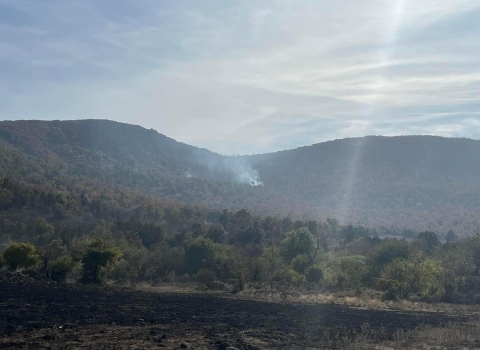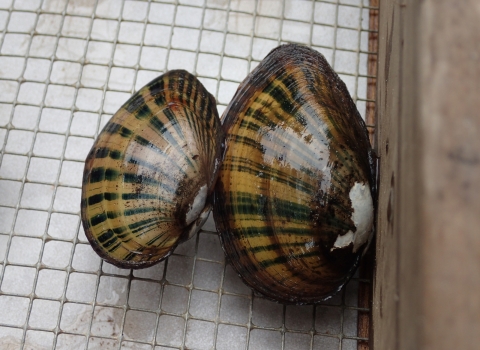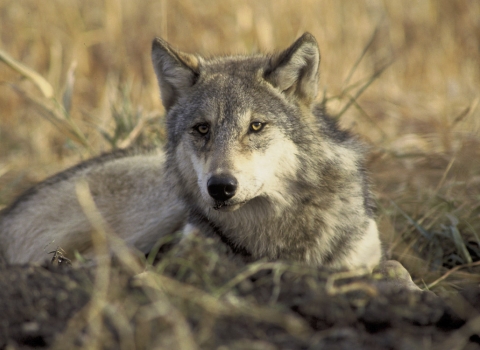LEWISTOWN, MT — An unlikely combination of peanut butter and drones has given researchers renewed hope for the future of North America’s rarest mammal, the endangered black-footed ferret. The project, which is a joint effort between the U.S. Fish and Wildlife Service, World Wildlife Fund, U.S. Geological Survey (USGS) National Wildlife Health Center, Model Avionics, and Support XXL, involves dropping vaccine-laced, peanut butter-flavored baits from drones in an effort to vaccinate the black-footed ferret’s primary prey: prairie dogs.
Both prairie dogs and black-footed ferrets are highly susceptible to sylvatic plague, a non-native disease against which the animals have little natural immunity. Once a prairie dog colony is infected with plague, the disease can quickly spread, devastating populations.
While captive-raised black-footed ferrets are vaccinated against plague prior to release into the wild, they live only in prairie dog burrows and prey almost exclusively on prairie dogs. Without a reliable source of prairie dogs, black-footed ferrets cannot survive. For this reason, biologists believe that plague outbreaks are the greatest obstacle to ferret recovery and are developing methods to manage the disease.
In search of a solution, between 2001 and 2009 researchers at the USGS National Wildlife Health Center and the University of Wisconsin developed and conducted extensive laboratory trials on an oral vaccine to protect prairie dogs from sylvatic plague. After promising results in the laboratory setting, field trials began in 2012 with technicians distributing vaccine baits by hand on 50-acre test plots. Again, the results were promising and large-scale field trials ensued.
To test the effectiveness of the vaccine on a broader scale, the partnership developed three mechanized vaccine bait delivery methods: the first drops one bait at a time from an unmanned aerial vehicle (UAV); the second drops one bait at a time from an all-terrain vehicle (ATV); and the third drops three baits simultaneously from an ATV.
In August 2016, the partnership tested all three prototypes across 1,200 acres of prairie dog colonies on U.L. Bend National Wildlife Refuge in Montana. The following month, biologists from Colorado Parks and Wildlife and Rocky Mountain Arsenal National Wildlife Refuge used the two ATV methods to apply the vaccine to 2,000 acres of prairie dog colonies. These tests clearly indicated that these new mechanized vaccine delivery methods are practical, efficient, and affordable.
While these preliminary results are promising, additional work is needed to determine if their application to larger areas can mitigate the lethal impacts of sylvatic plague in order to maintain sufficiently sized prairie dog colonies capable of supporting healthy black-footed ferret populations.
The next round of field trials is scheduled for summer 2017, during which time the partnership will fine tune various aspects of the vaccine baits and their delivery mechanisms and test new delivery methods in an effort to maximize the technology’s ability to treat larger areas.
To learn more about this project and the larger black-footed ferret recovery effort, please visit the following Web sites:
- General black-footed ferret information: http://blackfootedferret.org/
- Video of vaccine distribution: http://bit.ly/FerretVideo
- Public domain black-footed ferret photos: http://bit.ly/Ferretphotos (Credit: USFWS)
- Project photos: http://bit.ly/VaccineStills (Credit: WWF-US / Conservation Media)
- Video B-roll package of vaccine distribution: http://bit.ly/VaccineBRoll2 (Credit: WWF-US / Conservation Media)
- Plague and prairie dog management fact sheet: http://bit.ly/SVPprairiedog
- Black-footed ferret fact sheet: http://bit.ly/FerretFactSheet
- Black-footed ferrets on Facebook: https://www.facebook.com/FerretCenter/
- Black-footed ferret webcam: http://bit.ly/BFFCam
The mission of the U.S. Fish and Wildlife Service is working with others to conserve, protect, and enhance fish, wildlife, plants, and their habitats for the continuing benefit of the American people. We are both a leader and trusted partner in fish and wildlife conservation, known for our scientific excellence, stewardship of lands and natural resources, dedicated professionals, and commitment to public service.
Connect with our Facebook page at http://www.facebook.com/USFWSMountainPrairie, follow our tweets at http://twitter.com/USFWSMtnPrairie, watch our YouTube Channel at http://www.youtube.com/usfws and download photos from our Flickr page at http://www.flickr.com/photos/usfwsmtnprairie/.



